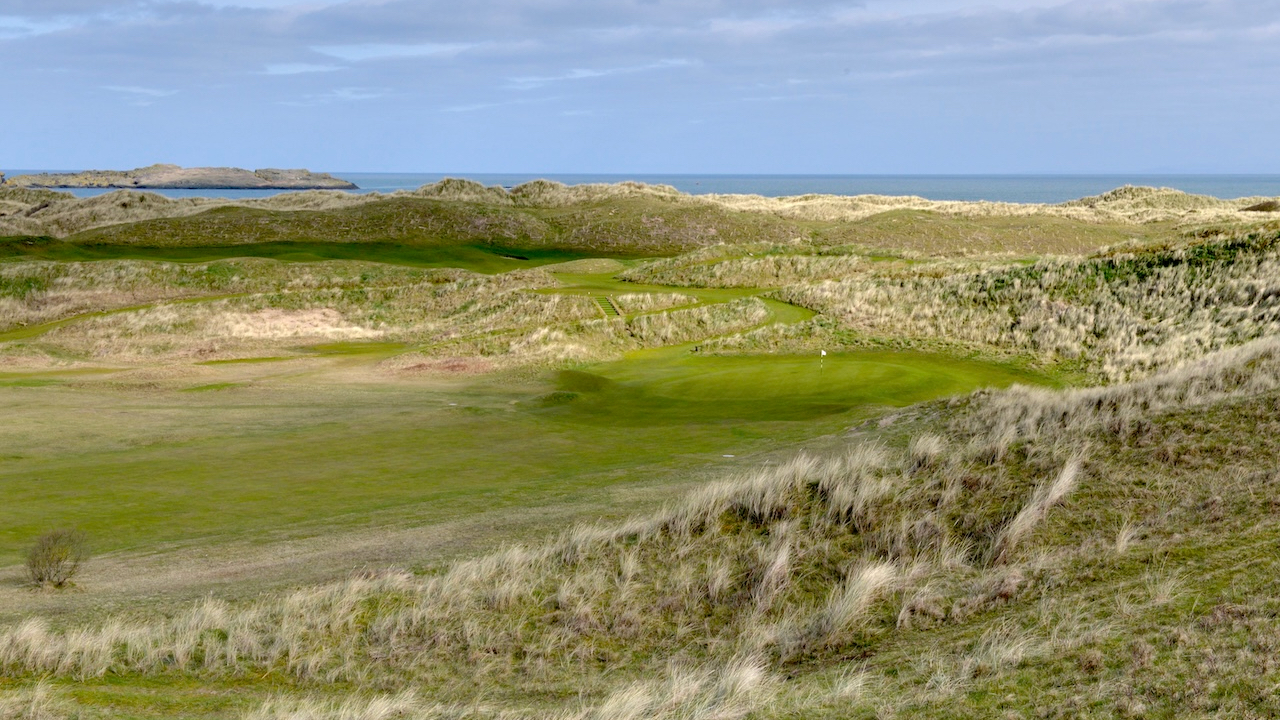
Sometimes the choice is easy; sometimes it’s not. If you are heading to a 36-hole venue, which course do you play if you only have time for 18… or which course do you play first if you’re playing both?
It is a fair case to argue that at some clubs you simply must play both courses. In England, I can give you no finer example than the heathland wonders at Sunningdale. Or, in Scotland, the King’s and Queen’s at Gleneagles. Or the Glashedy and Old at Ballyliffin in Ireland. Each sibling has equal footing and which one you play first should come down to the toss of a coin.
Elsewhere that sibling rivalry is more one-sided. Lahinch, on Ireland’s west coast, has 36 holes but its second course (Castle) cannot possibly compete with the revered Old course. Indeed, many golfers won’t even know the club has a rather charming, if less explosive links, on the inland side of the road.
It is therefore a balancing act trying to decide where you should play all 36 holes… and where 18 will suffice. Each course has merit but with so many Irish and Northern Irish golf clubs to choose from, it is no surprise that some lesser-known siblings will be overlooked. The island of Ireland has fifteen 36-hole venues. Several have a sibling rivalry that makes them inseparable, while others would see one counted out in the first round. That’s not to belittle the less accomplished sibling and, in Lahinch’s case, the Castle course is a less complex and far more playable round of links golf. It is considerably cheaper, too.
Here are five clubs, north and south of the Border, to give you food for thought. They are divided into resort, links and parkland courses and I've weighted them out of 10 to show what I feel the balance of power is between the two.
Resort courses
The question of whether both courses at a 36-hole resort are worth your time may be moot. Your package could include a round on each course or it may just make sense (financially and logistically) to play both and stay a night or two. Druids Glen, Carton House and The K Club are cases in point. Even Powerscourt, its 36 holes rolling through a vast estate, has a luxury hotel across from the clubhouse. But, as an aside, it is important to note that these resorts come with five-star luxury attached… which also hints at the quality of the courses.
Druids Glen: Druids Glen vs Druids Heath
Set close to the coast in Co. Wicklow, the resort has the recently renovated Druids Heath, and the even more recently renovated Druids Glen. The latter re-opened in 2023 after being closed for 16 months and it has turned into quite the masterpiece. It couldn’t be more ‘parkland’ if it tried and the terrain is drenched in ancient trees, lakes, streams and bridges. It is bursting with colour and quality, and the multi-million euro makeover is visible everywhere… right down to the grasses you walk on.
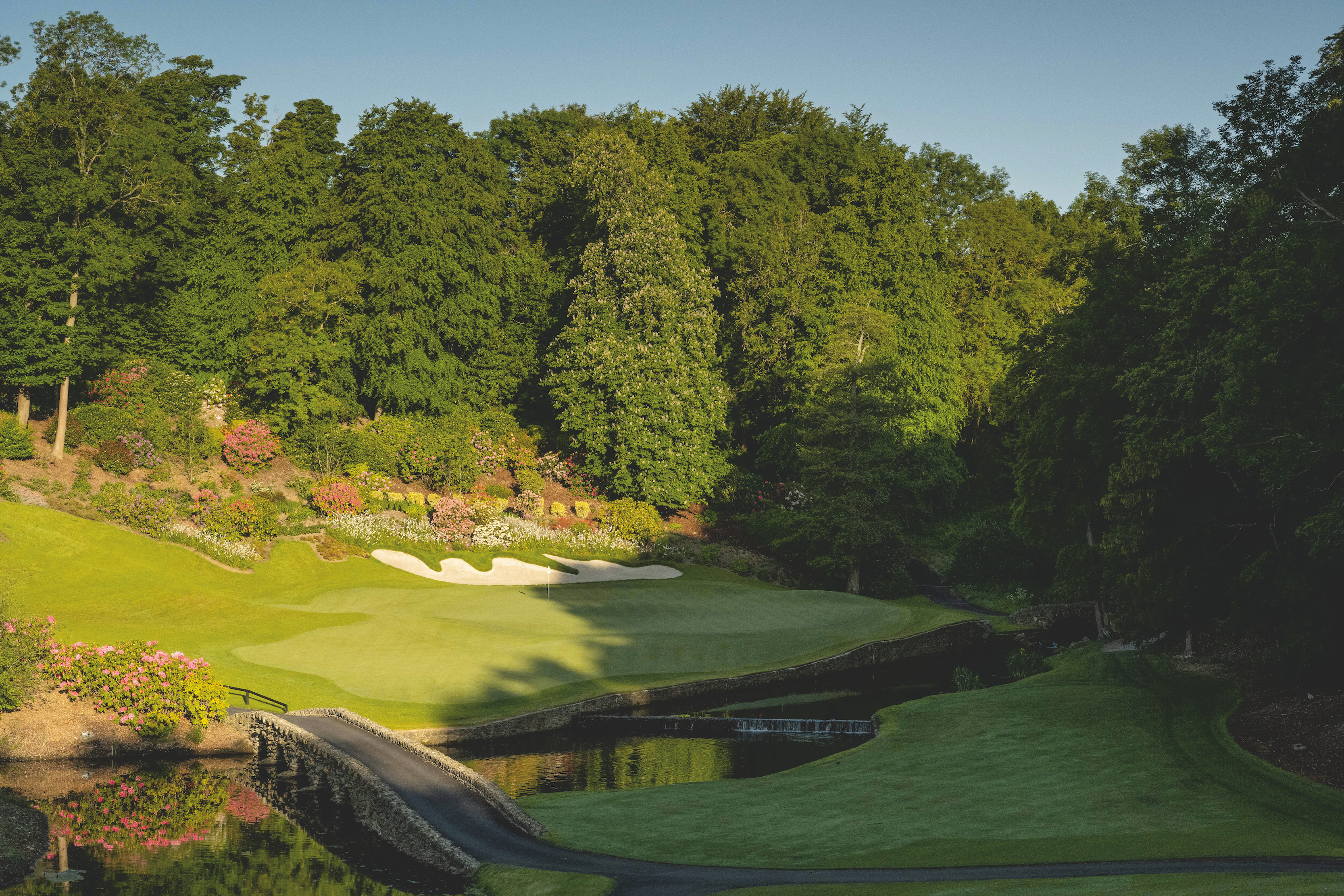
You’ll be enchanted by the sounds of wildlife and waterfalls, the Augusta-like flourishes and the best set of parkland par 3s in Ireland. You can even walk on water on the famous 17th, just as Colin Montgomerie did en route to his Irish Open victories. The course hosted the Irish Open four times (1996-1999) and it’s almost guaranteed it will host it again.
Its sibling, Druids Heath, had the same original designers (Pat Ruddy and Tom Craddock) and the same new designers (Peter McEvoy and re(Golf)’s Jeff Lynch). It was created to be a foil to the Glen, with a heathland hybrid vibe. It possessed heaving fairways and vast greens and bunkers. Gorse outweighed trees and it was known for its difficulty. Now though, many of those bunkers have gone, as have the back tees. It is far more playable. Slick greens remain the Heath’s key defence and you’re unlikely to escape without a three--putt.
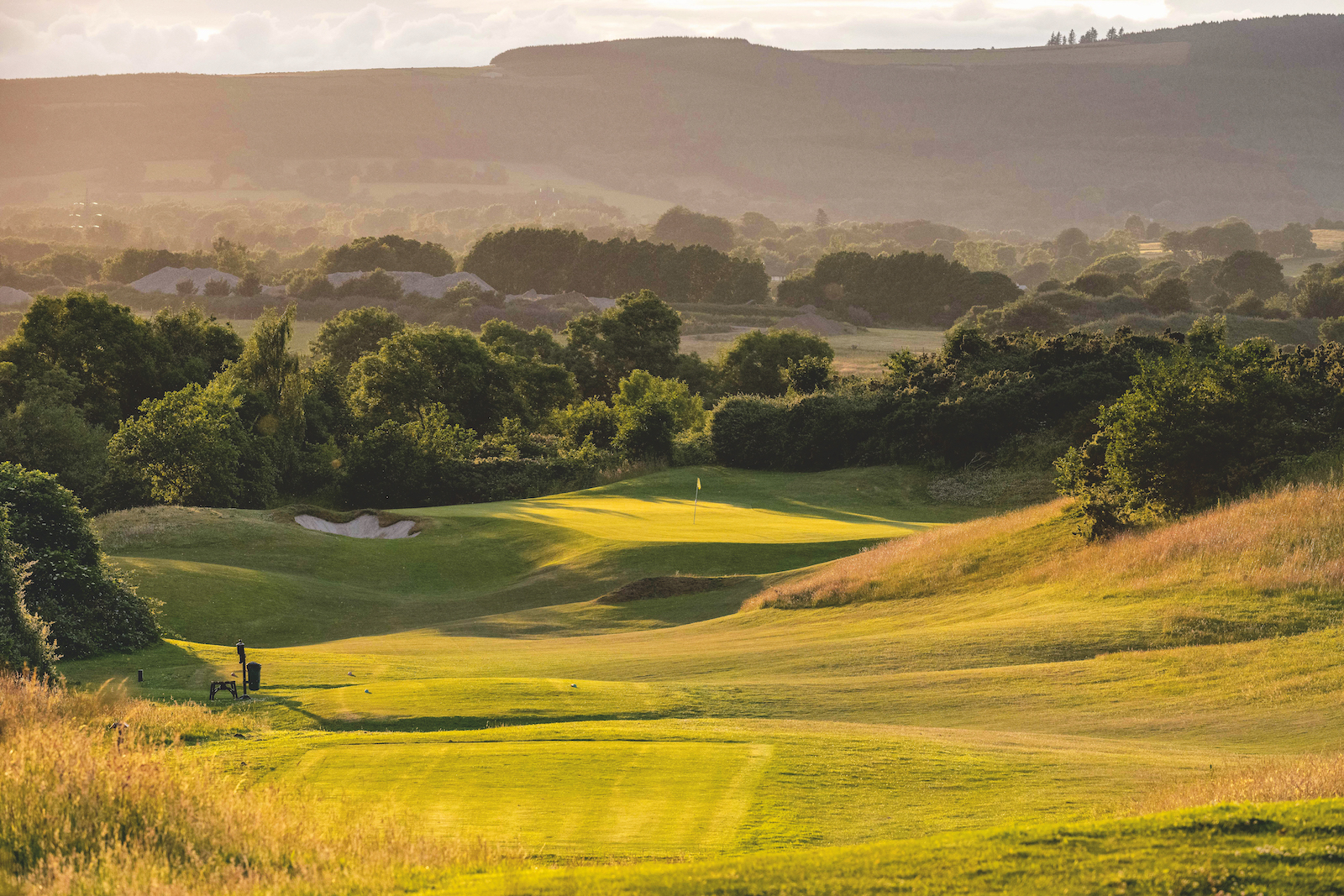
There’s no question that Druids Glen is the must-play sibling, but you will find plenty to engage you on the Heath, which also happens to be right beside the hotel.
Weighting 7:3
Carton House: Montgomerie vs O’Meara
There’s more five-star luxury to be enjoyed at Fairmont’s Carton House, west of Dublin. The estate is so big it crosses two counties and the long drive in slices the Montgomerie course in half. It also teases you with views of the opulent hotel, with the building dating back to 1739. The two courses fall on either side of the River Rye, their 18th holes running in parallel, and they opened in the same year (2002). There, however, the similarity ends.
The Montgomerie is a links-like beast of open spaces, swirling green complexes and copious, deep bunkers. It is shaped to intimidate and there’s a general rule of thumb: if you’re not a single-figure handicapper you may be better off on the O’Meara. Yes, that may be a taunt too far but it is worth heeding. You want to enjoy your golf, right, and if you spend too long in Montgomerie’s 130 bunkers you’ll wish your bag contained a JCB. Still, it is a beautiful course – in a stark way – especially when the golden fescue blows, and one thing is for sure: if you play well it is a memory you will cherish.

The O’Meara, by comparison, is elegant parkland routed through the estate’s giant trees. And yet those trees rarely come too close as you glide over rolling terrain. This is a driver’s delight with plenty of space and the opportunity to ‘go big’. The O’Meara also boasts one of the most idyllic three-hole stretches in Irish golf. The par-3, par-5, par-3 salvo (holes 14 to 16) are on a lower level, with the River Rye very much in play. It feels like you are playing through a valley of quiet solitude and it is nicknamed ‘Amen Corner’.
The Montgomerie has hosted the Irish Open and tests you all day long. The O’Meara appeals in a very different way and ticks parkland boxes galore. The contrast is telling but it makes the resort all the more appealing.
Weighting 5:5
Links courses
Royal County Down: Championship vs Annesley
Who visits Northern Ireland’s world-famous club to play only the Annesley course (aka Mourne course) at Royal County Down? Next to no one. With a mere par 67 you might feel it is irrelevant and, in terms of scale, it couldn’t be more different to its revered sibling. But don’t be fooled: the Annesley plays over the same dunescape, boasts the same views and quality, and even entwines with the Championship course on occasion.
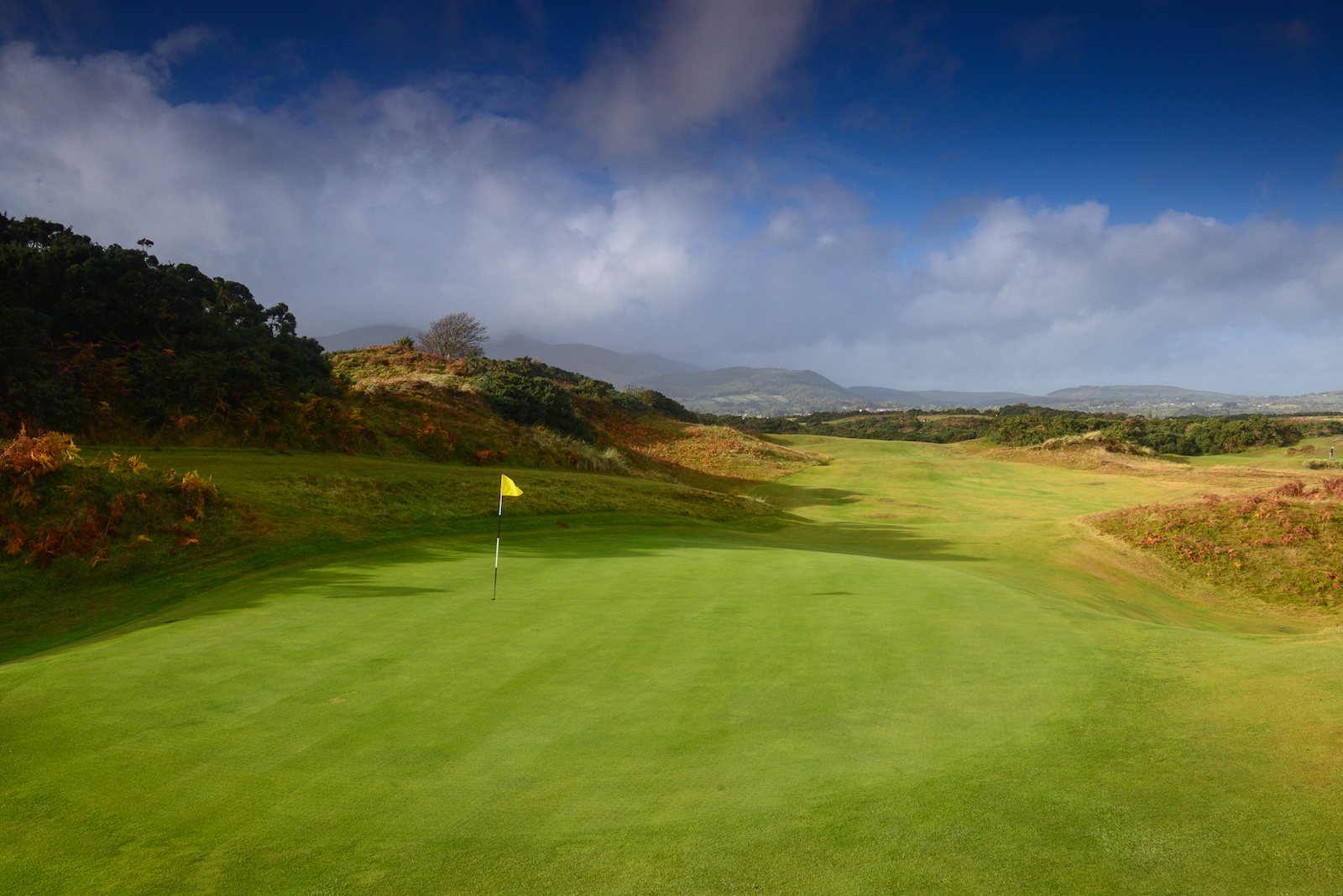
No, it doesn’t boast the same drama and challenge but if you want to get to grips with Royal County Down’s turf and greens, while also mastering your links short game, you could do no better than warm up on the Annesley first. It’s punchy and fun and brilliant, with five par 3s and no par 5s.
The Championship course – which happens to be hosting the Irish Open in 2024 – needs no introduction and attracts golfers from around the world like bees to honey. But play the Annesley first and you will find its charm sticks.
Weighting 7:3
Royal Portrush: Dunluce vs Valley
As at Royal County Down, Royal Portrush’s revered Dunluce Links needs no praise here. But what of its sibling, the par-71 Valley course? Back in 2018, two of Valley’s best holes were ‘acquired’ to create Dunluce’s new 7th and 8th, and Martin Ebert made changes to the remainder of the lesser-known course to compensate. Ebert is now back to make further changes. What many golfers will tell you is that if the Dunluce wasn’t alongside, Valley would be more highly regarded. It’s hard to argue as there are some brilliant, twisting, devious holes here.

It always scores well in course rankings, too. There are, however, some flatter holes out in an open bowl known as War Hollow. It is very visible from Dunluce’s Calamity par-3, and this is probably where the Valley loses some of its punch. You will still be tested but there is less drama than on the more curvaceous holes. Valley was designed by Harry Colt so you’re not going to be disappointed on that front and you’ll need to be clever to score well. Approaches are often pinched by dunes and consecutive holes do not play in the same direction. That means any wind that reaches down through the dunes is sure to challenge you.
The 6:4 weighting highlights just how good Valley is and it should not be missed.
Weighting 6:4
Parkland courses
Powerscourt: East vs West
Probably the two most ‘equal’ siblings in terms of style are to be found at Powerscourt, in Ireland’s ‘Garden County’. The East course was designed by Peter McEvoy (1996), and the West by David McLay Kidd (2003). Both were an early design in the career of each architect. The courses sit side by side in Co. Wicklow’s beautiful Powerscourt Estate, and while there are differences, there is more that holds them together than keeps them apart.
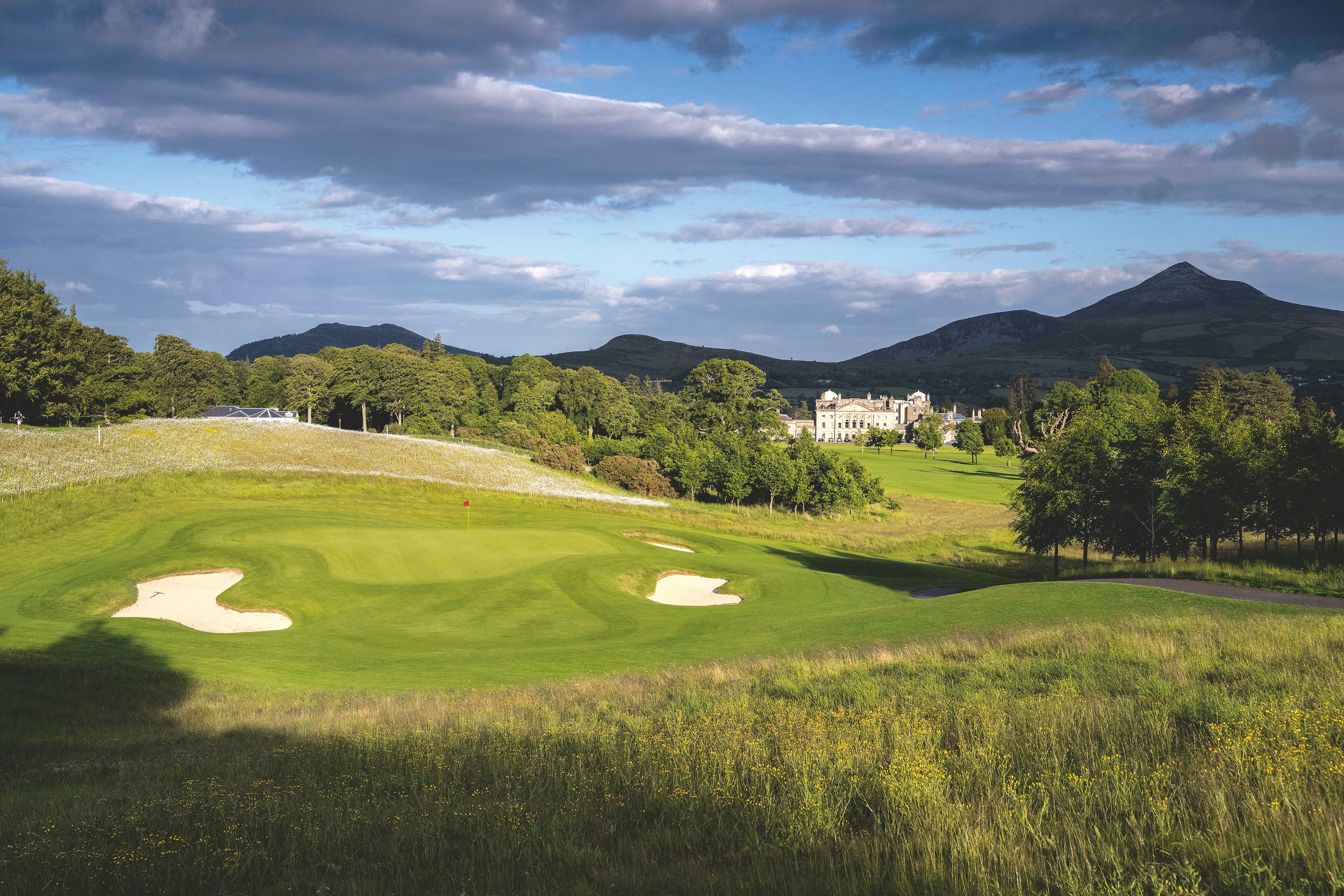
The West plays over higher and hillier ground but there is lots of shape to both courses. Trees are old and big but, for the most part they stay well back and give you room to play. That makes them sweet driving courses. Another similarity is the sensational, big and tricky greens. The only trees that make you feel enclosed are on holes 2 to 4 on the East, where beech trees tower over you. It’s a glorious dash into this colourful corner of the course and it may be the best three-hole stretch here.
Most telling though is how split golfers will be. Read any reviews and it is hard to determine which is top dog. Both are really good and the added bonus is that one course each day is open specifically for visitors.
Weighting 5:5
In all, the 15 Irish clubs with 36 holes – or more – are:
Ballybunion
Ballyliffin (45)
Carton House
Clandeboye
Druids Glen
Headfort
The K Club
Killarney (45)
Lahinch
Lough Erne
Portstewart (54)
Powerscourt
Rosapenna (63)
Royal County Down
Royal Portrush







